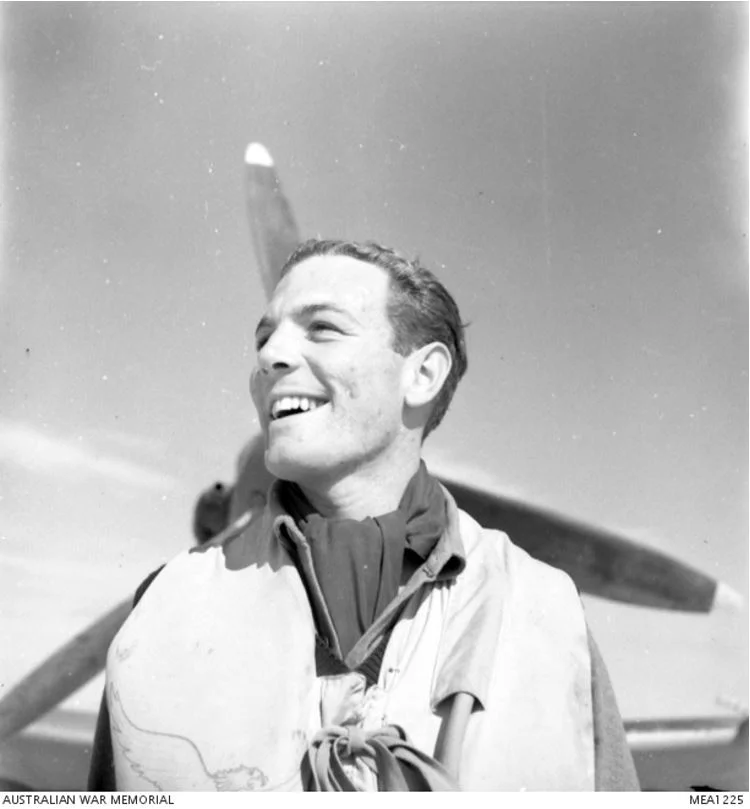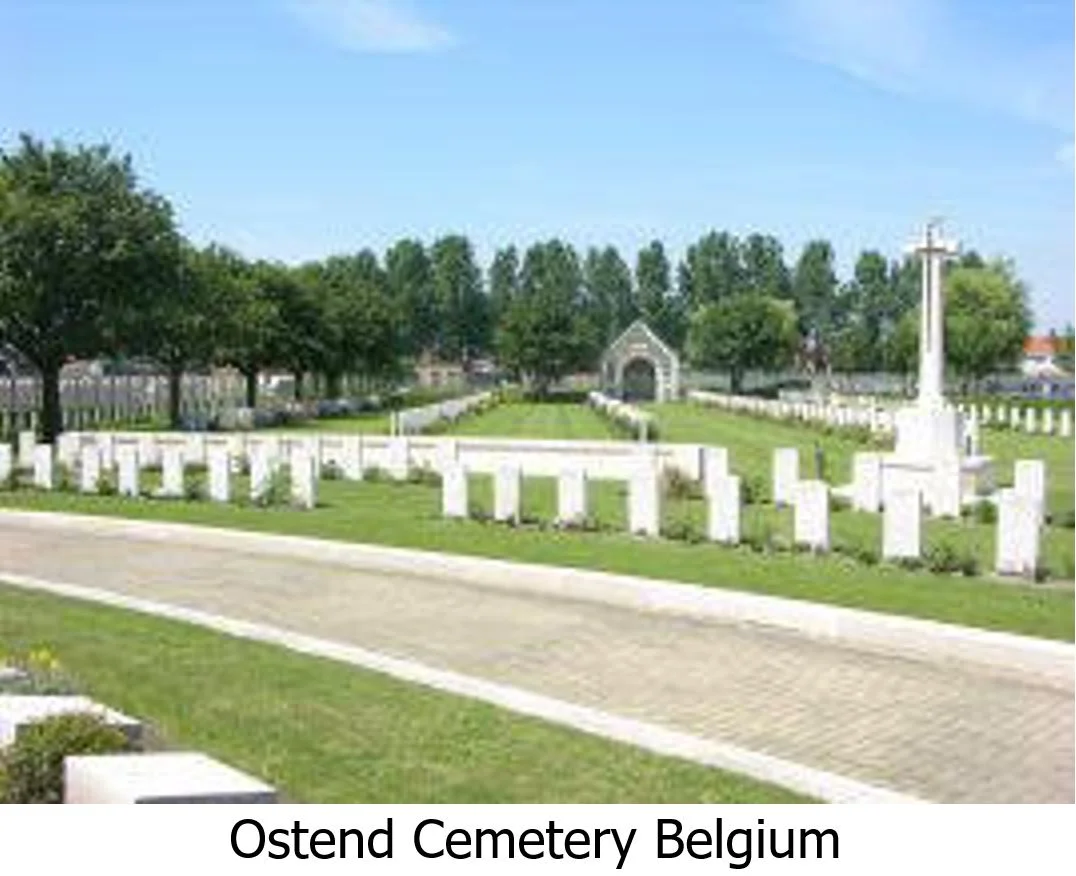FLTLT John Desmond Wallis 408451



| Squadron/s | 451 SQN |
| Rank On Discharge/Death | Flight Lieutenant (FLTLT) |
| Nickname | Barney |
| Mustering / Specialisation | Pilot |
| Date of Birth | 23 Nov 1921 |
| Date of Enlistment | 26 Apr 1941 |
| Date of Death | 14 Jan 1945 |
| Contributing Author/s | Compiled by Vince Conant 2016 The Spitfire Association |
Today we pay tribute to Flight Lieutenant John Desmond Wallis, who was killed on active service during the Second World War.
Born in the Melbourne suburb of Black Rock on 23 November 1921, John Wallis was the son of William John Wallis and Doris Maud Wallis. Known to friends as "Barney", Wallis attended Melbourne Grammar School and worked as an Assistant Manager for Elastic Webbing Australia in Queen Street, Melbourne.
Aged 19, Wallis enlisted in the Royal Australian Air Force on the 26th of April 1941. He had previously served in the 5th Battalion of the Victorian Scottish Regiment of the Militia, and soon commenced training as a pilot. As part of the Empire Air Training Scheme, Wallis was one of almost 27,500 RAAF pilots, navigators, wireless operators, gunners, and engineers who joined squadrons based in Britain throughout the course of the war.
In September 1941 Wallis embarked for overseas service, travelling to Rhodesia for further specialist training. On completing this he was posted to No. 451 Squadron of the Royal Australian Air Force. As part of the Royal Air Force's Middle East Command, No. 451 Squadron, equipped with Hawker Hurricanes, was based at various times in Syria, Cypress, and Egypt. From November 1943 Wallis was attached to No. 237 Squadron, RAF, and RAF Middle East Command. During this time Wallis was severely reprimanded for negligently damaging a Hurricane by failing to ensure sufficient petrol in the tank, resulting in an enforced landing.
Back with No. 451 Squadron in April 1944 and re-equipped with Spitfires, Wallis and his comrades supported Allied operations from bases in southern France and Italy before being sent to Britain in December 1944. There the squadron performed a variety of tasks supporting Allied ground forces in Western Europe, including escorting heavy bombers, conducting fighter sweeps, and attacking targets on the ground, including V2 rocket launch sites.
On 14 January 1945 Wallis's Spitfire accidently collided with another in the squadron while flying an operation in inclement weather. The commander of the squadron wrote to Wallis' father:
"Barney was leading his section of four aircraft in cloud and at a low altitude, when his No. 2 saw the shadowy form of a fifth aircraft climb from below. It struck the tail of Barney's machine with a wing tip and he appeared out of control when last seen in the cloud. It is an accident that could happen to any pilot and in view of weather conditions no other information can be obtained …
Barney was a most loveable character and his death has left a large gap in our ranks. To me, as to every other member of the Squadron, he was a personal and highly valued friend.
The bond of fellowship among pilots on an operational squadron has appeared at its best and strongest in this unit. We have lived like brothers, with never a hard word or thought, and the mutual trust and reliance necessary on operations was reflected in Mess life – which makes it all the harder when one so popular suddenly goes from our midst.
Among the airmen he was extremely popular, for he was untiring in his efforts to improve their welfare facilities. In addition he won their respect and devotion, for he was a man among men."
Wallis's body was buried in Ostend New Communal Cemetery in Belgium. He was 23 years old. His name is listed here on the Roll of Honour on my left, among some 40,000 Australians who died while serving in the Second World War. His photograph is displayed today beside the Pool of Reflection.
This is but one of the many stories of service and sacrifice told here at the Australian War Memorial. We now remember Flight Lieutenant John Desmond Wallis, who gave his life for us, for our freedoms, and in the hope of a better world.
Dr Lachlan Grant
Historian, Military History Section Australian War Memorial – www.awm.gov.au
Second World War, 1939-1947
Date of death: 14 January 1945
Place of death: Belgium
Cause of death: Flying Battle
Cemetery : Oostende New Communal Cemetery,
Oostende, Flanders, Belgium
Source: AWM148 Roll of Honour cards, 1939-1945 War, Air Force
SM384 - Mk.LFXVIE
39 MU 09-11-44, 451 Sqn RAAF 21-12-44, CE ops 14-01-45, SOC 31-01-45.Piloted by P/O E R Newberry Ser#421753. Part of a twelve aircraft sweep of Franfurt area, Germany, on 14th January 1945. Mid-air collision with SM333, over Ostend, Germany. Lt J D Wallis Ser# 408501 in SM333, was killed. Newberry baled out.
SM333 - Mk.LFXVIE
9 MU 30-11-44, 451 Sqn RAAF 21-12-44, Cat E ops 14-01-45, SOC 31-01-45. Piloted by FLt J D Wallis Ser# 408501. Part of a twelve aircraft sweep of Franfurt area, Germany, on 14th January 1945. Mid-air collision with SM384, over Ostend, Germany. Wallis was killed. Other pilot survived. P/O E R Newberry Ser#421753.
Courtesy: ADF SERIALS
R.I.P.
